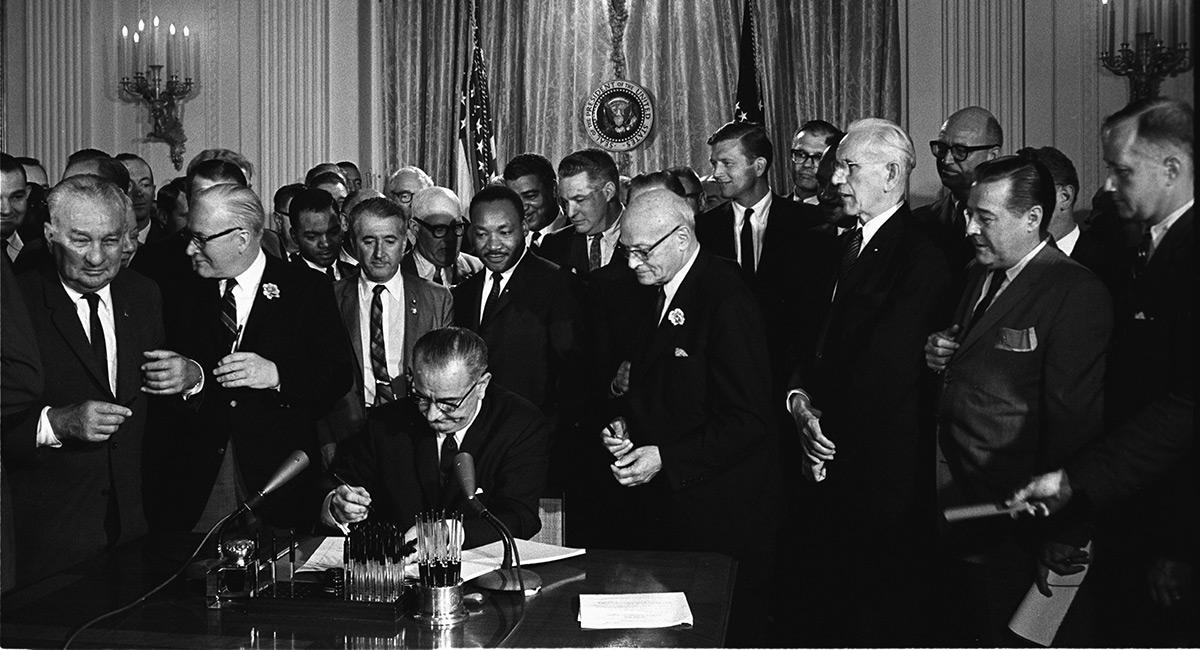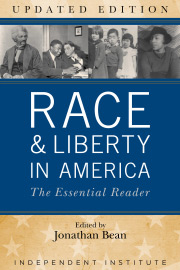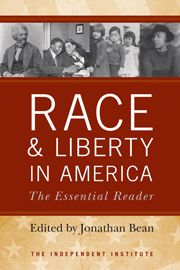July 2 marked the 50th anniversary of the most famous Civil Rights Act in U.S. history.
The Civil Rights Act of 1964 promised justice for all, regardless of race, color, creed, sex or national origin. The plain meaning of the act: “Nondiscrimination. Period.” The law was a triumph of colorblind individualism over group-based discrimination. Tragically, policymakers have spent the past 50 years trashing the act’s meaning by reviving group discrimination.
The Civil Rights Act strengthened the guarantee to equal protection under the law. Dismantling state-sponsored discrimination was right, proper and long overdue. Ridding the nation of Jim Crow laws was a notable achievement. More controversially, the Civil Rights Act prohibited discrimination in private employment or “public accommodations” (businesses open to the public). The measure of nondiscrimination was the individual. An establishment could only turn away (or refuse to hire) an individual for reasons unrelated to group status.
The Civil Rights Act was followed, almost immediately, by the bureaucratic creation of racial categories used by government officials seeking predetermined outcomes in hiring, college admissions, contracting and voting. Thus, bureaucrats rushed ahead with social engineering in direct contradiction of the Civil Rights Act.
By the 1970s, the trashing of the act’s plain meaning surfaced from the bureaucratic shadows as both political parties embraced “affirmative discrimination”—a policy encouraging—indeed, mandating in some cases—preferential treatment for “protected classes” at the expense of individuals who fell outside those classes.
Government officials betrayed the individualistic principle of nondiscrimination embodied in the Civil Rights Act by marching ahead with preferential deviations from nondiscrimination. They offered many justifications: using statistics to “prove” discrimination existed without bothering with due process, appeasing rioters who set American cities on fire or seeking minority votes at election time.
This mischief was made possible by the creation of arbitrarily-defined racial categories. The Civil Rights Act did not list any groups by name. Regardless of group status, there was to be no discrimination. Categories such as “Negro” (later Black, African American),” Mexican (later Spanish-speaking, Spanish-surnamed and lastly, Hispanic) came after the fact. This process of “check boxing” America began in 1965, when bureaucrats in the Equal Employment Opportunity Commission (established by the Civil Rights Act) placed racial categories on government forms. Armed with check boxes, bureaucrats, judges and politicians treated individuals differently based on their group status—plainly prohibited by the Civil Rights Act.
Dividing America into racial blocs was a reversal of the civil rights movement’s commitment to colorblind law and individualism. Frederick Douglass rejected racial labels and believed “that there is no division of races. God Almighty made but one race.” Justice John Marshall Harlan, dissenting in Plessy v. Ferguson (1896), stated, “Our Constitution is color-blind, and neither knows nor tolerates classes among citizens.” Color blindness was the guiding principle of the civil rights activism that led to the Civil Rights Act of 1964. The individual, not the group, was due equal protection of the law.
The NAACP—now a champion of “group rights”—once fought all classifications by race. In 1965, NAACP spokesman Clarence Mitchell stated, “The minute you put race on a civil service form ... you have opened the door to discrimination.” Two years later, the NAACP stated: “Classification by race based upon non-existent racial traits does not serve any valid legislative purpose ... [and is] in contradiction to the American conception of equality.” Today’s group-minded NAACP has forgotten what it once advocated so fiercely.
The Civil Rights Act was not a perfect law—no law is perfect—but it embodied two enduring principles: First, the individual (not the group) is the measure of justice. Second, nondiscrimination is mandatory for the government and worth pursuing in our private lives. If policymakers had enforced the Civil Rights Act in good faith, time might have eroded the tendency to view others as members of a group, rather than as individuals.
“Affirmative discrimination” does not satisfy the human yearning for fair treatment at the hand of government. Generations of civil rights activists fought for that treatment. Some died for it. They would be appalled at the trashing of the Civil Rights Act.
Now is the time to remind all Americans that there is no “exception” clause in the Civil Rights Act: “Nondiscrimination, except in the case of riots, elections, bureaucratic expediency, or the pursuit of ‘diversity’” does not appear in the language of the law. Let us restore the Civil Rights Act to its original meaning.










